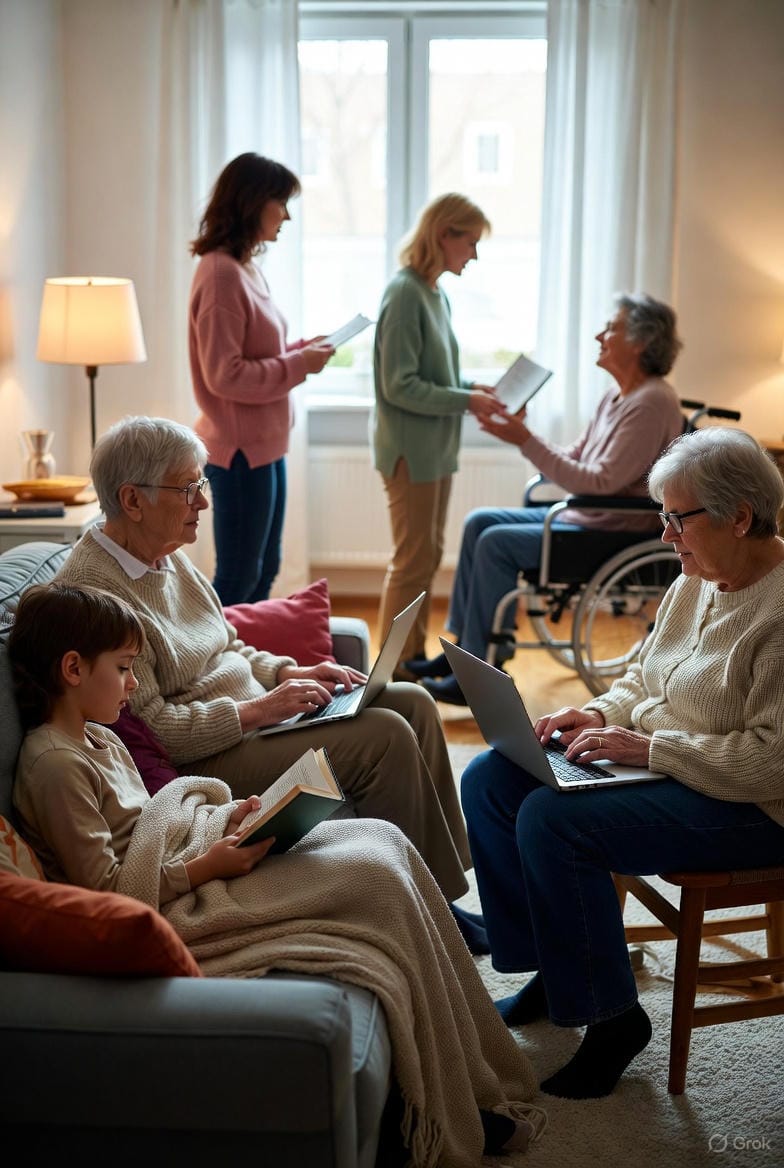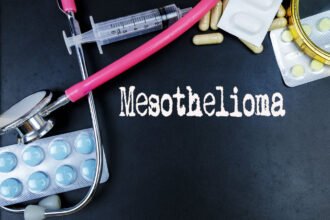Heating isn’t just about comfort, it’s about safety. For children, seniors, and those with health conditions, proper home heating can mean the difference between wellbeing and serious risk. Understanding how temperature, air quality, and humidity interact is the first step toward creating a home environment that truly protects its most vulnerable residents.
- Home Heating Basics for Seniors
- Heat Safety for Seniors, Kids, and Patients
- Elder Heating Needs and Health Risks
- Reliable Hospital Heating Systems for Safety
- Avoiding Common Elderly Heat Hazards
- Hospital Heating Maintenance and Protection
- Elder Heating Tips for Comfort and Safety
- Heat Safety for Seniors and Local Resources
- Efficient and Safe Elder Heating at Home
- FAQ
Home Heating Basics for Seniors
Because temperature regulation is biological, not about comfort. Children, older adults, and people with certain health conditions can’t efficiently control body temperature, their bodies lose heat faster or struggle to cool down. A cold or overheated home can push their systems into distress much faster than it would a healthy adult. These groups also have fragile thermoregulation and weakened cardiovascular, respiratory, and immune responses. A child’s small body loses heat four times faster than an adult’s; an elderly person’s circulation may not deliver warmth to extremities; and certain medications can alter temperature perception. When heating is inconsistent or air is polluted, it doesn’t just cause discomfort, it affects how the heart beats, how the lungs process air, and even how people sleep or heal.
Safe home heating isn’t just about setting the thermostat to 72°F, it’s about maintaining consistent, breathable, and pollutant-free air. Vulnerable individuals are less mobile, so exposure is constant; if air quality declines or a heating source leaks carbon monoxide, they’re the first affected. Safe heating for seniors and heat-sensitive individuals is less about turning up the thermostat and more about creating a stable microclimate that supports recovery and overall wellbeing.
Heat Safety for Seniors, Kids, and Patients
Children: Their smaller airways and developing lungs make them especially sensitive to dry air, dust, or fumes from unvented heaters. Overheating can cause dehydration and increase the risk of SIDS in infants.
Seniors: Age-related circulation issues make hypothermia a real risk, even indoors. Cold air constricts blood vessels, raising the danger for those with diabetes or low mobility. Poorly maintained systems can also release carbon monoxide, which older adults may not detect due to reduced smell sensitivity. That’s why furnace maintenance is so important, even a small leak or buildup can turn into a serious hazard. Regular maintenance keeps exhaust properly vented, prevents carbon monoxide exposure, and ensures consistent, clean heat for vulnerable individuals. Proper heat safety for seniors includes reliable, vented systems and humidity control to prevent respiratory stress.
Patients: Respiratory illnesses, autoimmune disorders, or mobility impairments amplify risk. Improper heating can trigger asthma attacks, worsen chronic conditions, or cause dangerous fluctuations in body temperature that slow recovery.
Carbon monoxide poisoning, the “silent” toxin, often goes unnoticed; its early symptoms (drowsiness, headache, confusion) are easy to miss in people already feeling unwell. Dry, overheated air irritates nasal membranes and worsens asthma or infections, while rapid temperature swings strain the heart and lungs. Portable heaters and unserviced furnaces add to the problem, emitting nitrogen dioxide and fine particulates that linger indoors.
Unsafe heating doesn’t just cause “accidents.” It quietly chips away at oxygen levels, hydration, and immune strength, all of which matter most for fragile bodies, especially when discussing seniors and heat safety.
Elder Heating Needs and Health Risks
Children need warmth that’s evenly distributed and humidity that prevents respiratory irritation, ideally 40-50% to protect developing lungs and reduce eczema risk. Radiant or hydronic heat works better than forced air.
Elderly individuals benefit from steady temperatures (68-72°F) without drafts or sudden drops, plus air that isn’t overly dry, which can worsen arthritis or sinus issues. Gentle, even heat, like from radiant systems or heat pumps, is ideal for elder heating.
People with medical conditions often need micro-climate control: HEPA filtration, consistent humidity, and heat sources that don’t emit combustion gases or volatile compounds. Stable temperatures help prevent inflammation, allergy flare-ups, and other chronic symptoms.
In short, “comfortable” means something different for every body. Each group needs not just heat, but controlled air quality, because a 70°F home can feel completely different depending on humidity, airflow, and pollutant levels. Proper elder heating setups ensure this comfort remains consistent.
Reliable Hospital Heating Systems for Safety
Central HVAC systems with sealed combustion furnaces keep exhaust gases out of living spaces. Heat pumps, both central and ductless, are energy-efficient, combustion-free, and maintain steady, moderate warmth with minimal airborne dust.
Radiant floor or wall heating (including hydronic systems) offers stable temperatures without circulating allergens. Infrared panels provide gentle, consistent heat with no moving parts or fumes. Smart thermostats add a safety layer, allowing caregivers to monitor and adjust temperatures remotely, an important part of both home and hospital heating systems.
Avoid unvented space heaters, kerosene units, and any open-flame systems, they create a false sense of comfort while releasing harmful gases. Safety means using systems that self-regulate and vent properly, even when no one’s watching. Reliable hospital heating also ensures patients and seniors experience consistent comfort during recovery.
Avoiding Common Elderly Heat Hazards
Never use ovens or grills for heat, they pose a serious carbon monoxide hazard. Avoid blocking vents or heat registers with furniture or rugs, since it disrupts airflow, traps dust, and can lead to moisture buildup and mold.
Don’t leave portable heaters unattended, especially around children or pets, and never rely on them long-term, cords, extension strips, and curious hands don’t mix. Drying clothes near heaters also creates uneven humidity and raises fire risk.
Skip heavily scented candles or plug-ins; they release irritants that combine with dry air and worsen breathing issues. Never ignore “minor” furnace smells, burning dust or chemical odors often signal maintenance problems.
And forget overheating rooms “for the baby”, infants sleep best at around 68°F, and excess warmth raises SIDS risk. Maintaining elderly heat comfort means prioritizing steady airflow, clean filters, and proper ventilation.
Good heating habits aren’t about cranking up the thermostat; they’re about steady airflow, clean equipment, and consistent comfort, the foundation of heat safety for seniors.
Hospital Heating Maintenance and Protection
Install carbon monoxide detectors on every floor and test them monthly. Use dual smoke/CO detectors, interconnected models work best, and replace smoke detector batteries every six months.
Schedule annual professional inspections for furnaces, heat pumps, and chimneys, and include a combustion analysis to catch invisible exhaust leaks many technicians overlook. Add electrical inspections for older homes, where overloaded outlets pose hidden fire risks.
Replace filters every 30-90 days, and upgrade to MERV 11 or higher to reduce dust and fine particles. Have ducts cleaned as needed to maintain airflow.
Use humidifiers or whole-house air purifiers to balance air quality in winter, but keep humidity properly calibrated, too much causes condensation and mold, too little dries out airways.
Regular upkeep isn’t just about preventing breakdowns, it’s about preventing hospital visits. Think of it as a “heating ecosystem checkup,” where every component affects the others, from elder heating systems to hospital heating safety.
Elder Heating Tips for Comfort and Safety
Use a hygrometer to track humidity (aim for 35-50%) and set thermostats for gradual shifts rather than big jumps, sudden changes strain both the system and the body.
Layer warmth smartly with thermal curtains, draft stoppers, and area rugs that retain heat efficiently. Pair temperature with texture: rugs, curtains, and fabric furniture hold radiant warmth better than bare surfaces.
Use micro-zoning to keep bedrooms slightly cooler for sleep and living areas warmer for comfort. Rotate sleeping or rest areas to avoid direct drafts or vents, and regularly check on at-risk family members for subtle signs of overheating or chill, flushed skin, drowsiness, or shivering.
Track indoor air quality with low-cost CO₂ or VOC sensors to know when to ventilate. Hydrate the air, not just the people, small humidifiers near sleeping areas make a big difference.
Create daily “checkpoints”: a quick look at thermostats, filters, and vents can prevent major issues. A healthy home is quiet, steady, and invisible in its comfort, no whirring fans, sharp drafts, or static shocks. Proper elder heating practices make that peace possible.
Heat Safety for Seniors and Local Resources
Local utility assistance programs often provide energy discounts or emergency heating repair. Weatherization Assistance Programs (WAP) offer free insulation upgrades and furnace tune-ups for low-income or senior households, while public health departments and area agencies on aging can connect caregivers with home safety assessments.
Many churches, nonprofits, and community centers run energy-share networks or open warming stations during cold snaps. Reputable HVAC professionals frequently offer seasonal safety checks or discounted maintenance plans for seniors and medically fragile households. Some medical alert systems even integrate with smart thermostats to trigger alerts if indoor temperatures drop dangerously low, an extra layer of heat safety for seniors and patients alike.
Warmth shouldn’t depend on income, and help exists long before a crisis hits. No one should have to choose between safety and comfort when it comes to seniors and heat management.
Efficient and Safe Elder Heating at Home
Aim for consistency, not extremes. A steady 68-70°F protects health and saves energy. Seal leaks before upgrading, weatherstripping and insulation often deliver more comfort per dollar than new gadgets.
Schedule maintenance before cold weather hits; it’s cheaper and safer than emergency repairs. Plan ahead for outages with battery-powered CO detectors and safe backup heat sources, like vented gas logs or generator-ready systems.
Think “system,” not “device.” Heating safety depends on air circulation, humidity, and clean energy, not just the furnace. Seal the home’s envelope, since every drafty window wastes as much energy as an open door, and upgrade to smart ventilation to keep heat in and pollutants out. The same principles guide reliable hospital heating systems for patients and staff comfort.
Warm people, not rooms, layering clothes, slippers, and blankets is often more efficient than raising the thermostat. Teach everyone how to shut off heaters safely, because empowerment is part of safety.
Finish the season with a spring maintenance checkup; post-winter servicing reveals hidden soot, rust, or wiring wear.
The real balance comes from intention over intensity, small, thoughtful adjustments that make warmth sustainable and safe for all, from family homes to hospital heating environments.
FAQ
Can Heat Cause Fever In Child?
Not exactly, but it can trick you into thinking it did. When a child overheats (say, from hot weather or too many layers), their body temperature can climb, yet it’s not a true immune response. It’s like the body’s cooling system lagging behind the weather. Real fever means the body is fighting something, not reacting to the environment. So if your child cools down and still feels flushed or tired, that’s when it’s time to check in with a doctor.
Are Heated Mattress Pads Safe For Children?
They can be, but the margin for error is tiny. Think of them as a comfort gadget for grown-ups, not kids. Children’s sleep habits are unpredictable; they kick blankets, spill drinks, and rarely stay still. That makes electrical bedding more risk than reward. If warmth is the goal, a breathable weighted blanket or flannel sheets do the job without any wiring drama.
Are Heated Blankets Safe For Kids?
Technically, yes. Practically, not ideal. Heated blankets rely on judgment, and kids aren’t great at noticing when something’s too warm or not working right. Even models with auto-shutoff can fail if crumpled or wet. A safer move: pre-warm the bed with the blanket, then unplug it before your child gets in. That gives them the cozy factor, minus the worry.
Why Do The Elderly Not Feel The Heat?
It’s not just about aging, it’s about sensitivity drift. Over time, nerve endings dull and the body’s thermostat recalibrates. To many older adults, 85°F can feel like a mild spring day. Add medications that alter blood flow or hydration, and the body stops sending clear “I’m overheating” signals. That’s why prevention matters more than comfort cues, fans, cool drinks, and regular check-ins save lives, even when no one “feels” hot.










